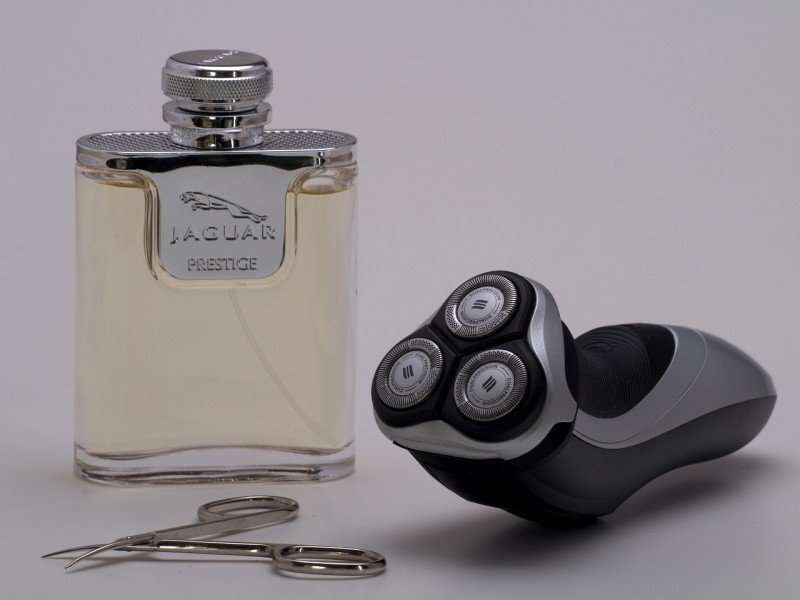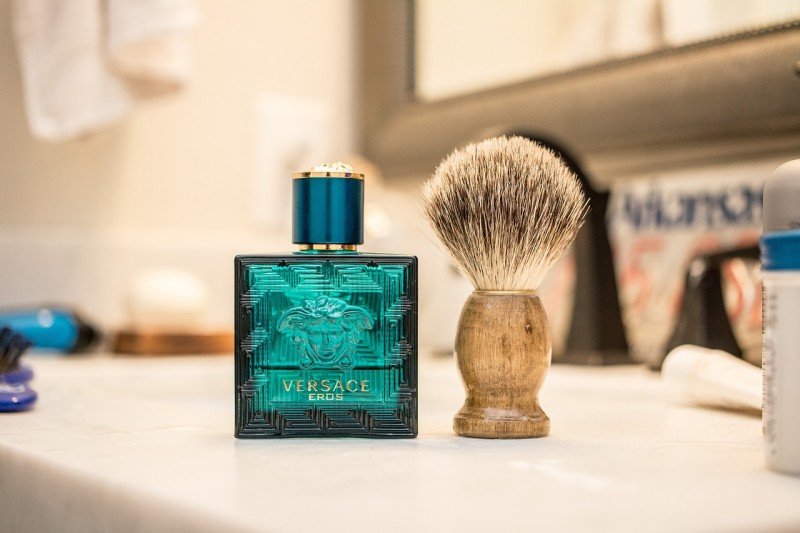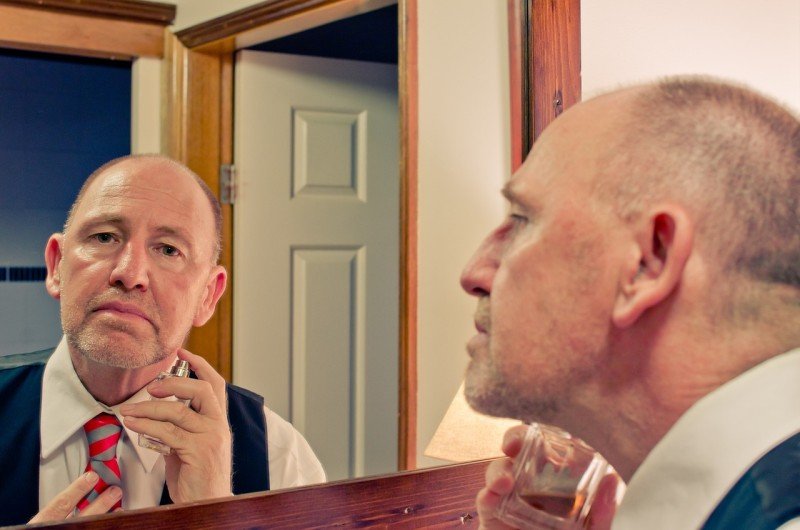Are you feeling frustrated with the persistent red irritation after each shave? This is a common issue, but effective methods exist to counter it.
This article explains why certain grooming habits, such as exfoliating before shaving and using warm water, can help ward off razor burns.
You'll also learn the advantages of shaving oils, safety razors, and post-shave balms.
Ready to tackle razor burns and enjoy a smoother shaving experience? Let's get started!
Key Takeaways
- Exfoliating clears dead cells and lifts hair for a smooth shave.
- Shaving oil creates a protective barrier for a smooth shave and prevents irritation.
- Using a safety razor reduces skin irritation and contributes to a sustainable lifestyle.
- Shave lightly and toward hair growth to minimize skin trauma and prevent razor burns.
Exfoliating Before Shaving
First off, you must know that one key step to preventing razor burns is exfoliating your skin before you start shaving. Think of exfoliation as a prep job for your skin. It clears your skin of dead cells and helps lift your hair, providing a clean, smooth base for your razor to glide over. But how often should you exfoliate? This brings us to the term 'Exfoliation Frequency.'
Exfoliation Frequency depends on your skin type and sensitivity. For those with oily or combination skin, you're safe to exfoliate around two or three times a week. If you have dry or sensitive skin, once a week should suffice.
Next, let's talk about 'Scrub Selection'. When choosing a scrub, look for gentle formulas on the skin that are efficient in exfoliating. Ingredients like walnut shell powders, jojoba beads, or sugar granules are great for physical exfoliation. Chemical exfoliants, like glycolic acid, are also beneficial but should be used sparingly.
The Role of Warm Water
You might wonder, what role does warm water play in preventing razor burns? It's more significant than you might think. Warm water's hydration effects and temperature significance are critical to a smooth, burn-free shave.
Hydration effects: Warm water softens your skin and hair. Soft skin offers less resistance to the razor, leading to a smoother shave. Soft hair is more accessible to cut, reducing the need for repeated razor strokes that can irritate.
Temperature significance: Warm water opens up your pores. This allows for a closer shave and reduces the chances of hair being pulled by the razor - a common cause of razor burns.
Prepares the skin: Warm water also helps to remove oils and dirt from your skin. This ensures that your razor can glide smoothly over your skin, reducing friction and the risk of razor burns.
Enhances shaving product effectiveness: Warm water boosts the performance of your shaving cream or gel. It helps the product create a thicker lather that protects against razor burns.
Benefits of Applying Shaving Oil
Applying shaving oil can significantly enhance your experience and outcomes in the quest for a burn-free shave. The importance of oil selection can't be overstated. You might be tempted to grab any oil, but choosing one specifically designed for shaving maximizes the benefits, boosting your skin's protection against razor burns.
Shaving oils, often enriched with natural ingredients like coconut, jojoba, or argan oil, create a barrier on the skin. This protective layer provides a smooth glide for your razor, reducing friction and preventing irritation. Minimizing tugging and pulling makes you less likely to end up with red, angry skin post-shave.
The hydration benefits are another key advantage. Shaving can strip your skin of natural oils, leaving it dry and prone to burning. Shaving oil helps replenish this moisture, maintaining a healthy skin barrier. This hydration boost ensures your skin remains soft and supple, not tight and uncomfortable.
Importance of Using a Safety Razor
Switching to a safety razor can make a difference in your shaving routine, significantly reducing the likelihood of razor burns. Besides the obvious benefit of a smoother shave, you might not have considered several other advantages.
-
Razor longevity: Safety razors are designed for long-term use. Unlike disposable razors, you won't have to throw them away after a few shaves. This saves you money over time and contributes to a more sustainable lifestyle.
-
Sustainable shaving: Using a safety razor, you're making a conscious effort to reduce waste. It's a simple way to make your grooming routine more eco-friendly.
-
Skin health: Safety razors are known to cause less irritation and are, therefore, better for your skin. Fewer passes with the blade means less potential for cuts and nicks.
-
Precision: These razors offer control that disposable razors simply can't match. They're especially useful for shaping and styling facial hair.
When you choose a safety razor, you're not just avoiding razor burns. You're also investing in a tool to help you achieve a better shave, improve your skin health, and contribute to a more sustainable world.
Shaving Lightly and Aftershave Balm Usage
Maintaining the integrity of your skin is another vital practice to prevent razor burns. This includes shaving lightly and using aftershave balm strategically. Blade quality is also important, as using a dull blade can cause you to press harder, leading to skin irritation and burns. Therefore, investing in a high-quality razor and changing the blades regularly is crucial.
Your shaving technique also matters. It is important to always shave in the direction of hair growth to minimize skin trauma. If you are prone to razor burns, make fewer passes over the same area, which can exacerbate skin irritation. Shaving lightly does not mean compromising on a close shave. It is all about mastering the right technique.
After shaving, it is essential to apply an aftershave balm. This product is designed to soothe and moisturize the skin, reducing redness and irritation. Some balms even have anti-bacterial properties, providing extra protection.
Frequently Asked Questions
What Type of Razor Is Best for Sensitive Skin Prone to Razor Burns?
If you have sensitive skin that often falls victim to razor burns, a single-blade razor would be your ideal choice. Mastering the art of shaving and giving adequate attention to blade maintenance can significantly reduce irritation and keep annoying razor burns at bay.
How Do Diet and Hydration Affect the Likelihood of Getting Razor Burns?
Keeping yourself adequately hydrated plays a significant role in reducing the risk of razor burns. When properly hydrated, your skin remains resilient and less prone to cuts and scratches. A balanced diet rich in vitamins and nutrients also paves the way for healthier skin, minimizing irritation. It's not simply about drinking water and eating well; it's about how these habits can lead to better skin and fewer shaving mishaps.
Can Certain Types of Shaving Cream or Gel Increase the Risk of Razor Burns?
Indeed, the shaving creams or gels you use can play a part in the occurrence of razor burns. Selecting products that are a good match for your skin type is a sensible step. Additionally, employing good shaving practices and picking the right aftershave can significantly reduce such incidents.
Are There Any Natural Remedies to Soothe Razor Burns?
Surely, natural solutions exist that can help calm razor burns. One such remedy is Aloe Vera, known for its hydrating and inflammation-reducing properties. Another method that can be used to reduce redness and swelling is applying a cold compress. These remedies are simple yet effective in soothing skin irritated from shaving.
How Long Should I Wait Between Shaves to Prevent Razor Burn?
The optimal duration to let pass between shaving sessions is generally 24 to 48 hours. This time frame gives your skin a chance to recuperate. Additionally, adopting good shaving methods and using beneficial after-shave products can significantly help mitigate the risk of razor burn.


